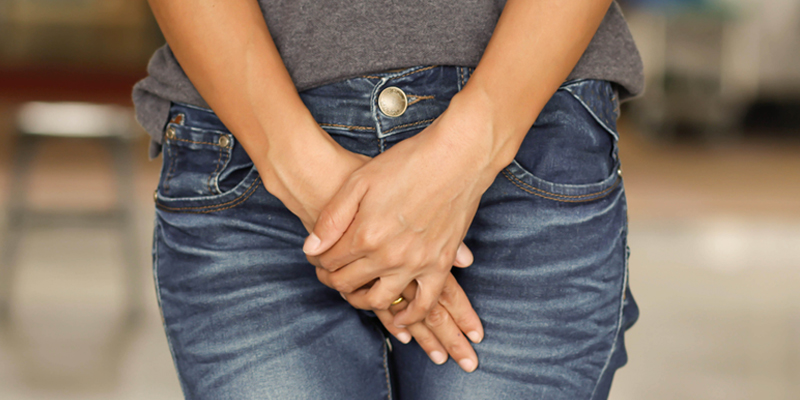
Urinary Incontinence is any unexpected loss of urine and is often referred to as urinary leakage. It can range from a very small amount to a complete loss of bladder control.
Whether drops of urine or unexpectedly emptying the full bladder, quality of life is significant impacted by urinary incontinence. There are several different types of incontinence, but the most common include:
In order to understand incontinence, we must first explain bladder function. In typical bladder function, the bladder muscles relax, and the bladder fills with urine like a balloon while the pelvic floor muscles and supporting ligaments hold the urethra closed, so no urine leaks out. When you are ready to urinate, the pelvic floor muscles relax and open the urethra and the muscles of the bladder contract, naturally pushing out the urine.
Stress incontinence is when you leak with some forceful exertion or “stress” on the bladder, such as coughing, jumping, laughing, sneezing, sex, lifting something or changing positions.
Stress incontinence is typically worse when the bladder is already full. It is much more common in women than men, because of the female anatomy with a short urethra. This type of leakage is common after delivery of a baby but in no way should be considered “normal”.
In men, stress incontinence is more common after prostate surgery, but again should not be considered “normal”.
Stress incontinence has several causes, but the one people most often think of is a weakness in the pelvic floor muscles. If the muscles are weak, they are unable to hold the urethra closed, especially during a forceful push on the bladder with activities like sneezing.
However, you can also have stress incontinence if the pelvic floor muscles are too tight. When they are too tight, they also become very weak.
Think of your pelvic floor muscles like a fist. Hold that fist very tight and keep it that way for hours. When you go to open that fist, it would be very weak and unable to hold anything. The same is true of the muscles and they are unable to hold back the urine.
Other causes can include:
Some risk factors include vaginal childbirth, increased body weight, abdominal and pelvic surgeries, increased age and chronic illnesses especially neuromuscular, autoimmune and respiratory diseases.
It is very common for people with stress urinary incontinence to wear a pad for protection, especially during exercise. Physical therapy treatment for stress urinary incontinence varies depending on the cause.
If the pelvic floor muscles are weak, then treatment is often focused on strengthening the pelvic floor muscles and muscles around the hips and pelvis. This strengthening is eventually progressed to during functional provoking situations, such as tightening pelvic floor and lower abdominal muscles while working on jumping or coughing.
If you are doing Kegels and the stress incontinence is staying the same or getting worse, you may have tight pelvic floor muscles and treatment is focused on relaxation and getting better length in the pelvic floor muscles and supporting muscles around the pelvis.
Urge incontinence is a leakage that occurs from a spasm in the bladder and is typically associated with increased urinary urgency and difficulty getting to a bathroom on time. The person may or may not feel the leakage as it is happening, but often notices saturated underwear throughout the day without a pad. The leakage may occur as you are rushing to get to the bathroom.
Normal frequency throughout the day is 5-7x/day. With urge incontinence and overactive bladder or urgency / frequency syndrome, this number is typically much higher. People tend to wear pads all day with this type of leakage.
Some common causes of urge incontinence are:
People with urge incontinence often present to physical therapy with a tight pelvic floor with noted spasms. Urge incontinence physical therapy treatments often include behavioral techniques such as bladder retraining, urge deference techniques, diet modifications and treatment for the tight pelvic floor muscles with relaxation and stretching techniques.
Mixed incontinence is a combination of stress and urge incontinence. Often one type is more dominant than the other, but they are both present. As guessed, the causes and treatments for mixed incontinence are those listed above for stress and urge incontinence.
Nocturnal enuresis is involuntary loss of urine while sleeping after the age that night-time continence is typically accepted. While we often think of this as a childhood issue, it can also happen in adulthood.
Some causes include:
Treatment of nocturnal enuresis often involves treating the underlying cause or illness. However, if the cause is overactive pelvic floor muscles, chronic constipation, or uncoordinated pelvic floor muscles, physical therapy can be very effective.
Physical therapy treatment focuses on bladder retraining, stretching and strengthening the muscles around the pelvic floor and biofeedback for improved pelvic floor coordination.

